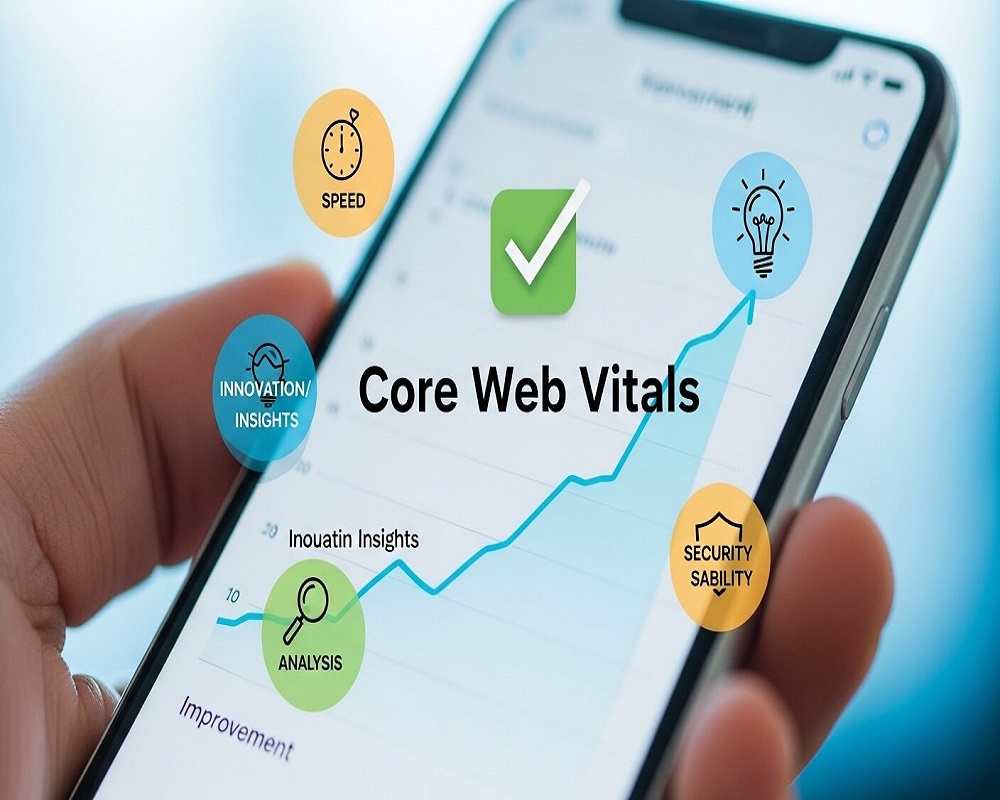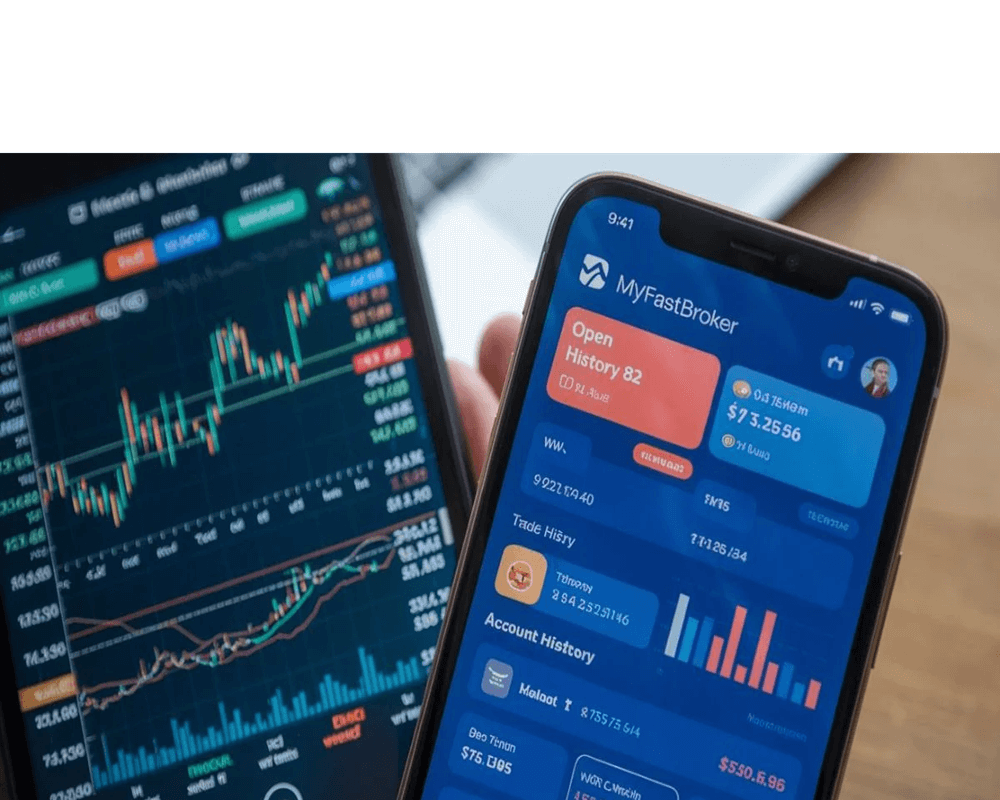In the mobile-first era of search engine optimization, delivering a fast, seamless user experience on smartphones is critical for ranking success and user retention. Core Web Vitals for mobile—Google’s trio of metrics comprising Largest Contentful Paint (LCP), First Input Delay (FID), and Cumulative Layout Shift (CLS)—are pivotal in measuring and improving site performance. With mobile searches accounting for 63% of global traffic in 2025, according to Statista, and Google’s mobile-first indexing fully implemented, optimizing these metrics is non-negotiable. Poor Core Web Vitals can lead to a 20-30% drop in organic traffic, as evidenced by a 2024 Semrush study, while optimized sites see up to 15% higher conversion rates.
For instance, an e-commerce retailer optimizing mobile LCP from 4s to 2s boosted mobile revenue by 12% within three months. This guide provides a comprehensive roadmap to optimize Core Web Vitals for mobile, covering their definitions, measurement, technical strategies, real-world examples, and proactive practices. Whether you’re a web developer, SEO specialist, or business owner, mastering these optimizations will enhance your site’s topical authority and competitive edge in mobile search.
Understanding Core Web Vitals: The Mobile Context
Core Web Vitals are user-centric metrics introduced by Google in 2020 to quantify webpage performance and experience. For mobile, they are especially critical due to varying device capabilities and network conditions. The three metrics are:
- Largest Contentful Paint (LCP): Measures the time to render the largest visible content element (e.g., hero image, text block). Target: <2.5s for 75% of page loads.
- First Input Delay (FID): Tracks the delay between a user’s first interaction (e.g., tapping a button) and the browser’s response. Target: <100ms.
- Cumulative Layout Shift (CLS): Quantifies unexpected layout shifts during page load, affecting visual stability. Target: <0.1.
These metrics, part of Google’s ranking signals since 2021, carry greater weight in mobile-first indexing, where 80% of sites now compete, per Moz’s 2025 report. Semantically, Core Web Vitals align with entities like page speed, mobile usability, and user experience, forming a critical node in SEO ecosystems. Mobile optimization demands extra attention due to slower processors, smaller screens, and variable networks like 4G/5G.
Why Mobile Matters
Mobile users expect instant responsiveness. A 2024 Akamai study found that 53% of mobile users abandon sites taking over 3 seconds to load, directly impacting bounce rates and rankings. Optimizing Core Web Vitals for mobile ensures faster load times, smoother interactions, and stable layouts, enhancing both user satisfaction and search performance.
Why Optimizing Core Web Vitals for Mobile Is Critical
The stakes for mobile optimization are high, with tangible SEO and business impacts.
Direct SEO Impacts
- Ranking Boost: Google’s 2025 Helpful Content Update prioritizes mobile Core Web Vitals, with “good” scores correlating to 10-15% higher rankings.
- Bounce Rate Reduction: Optimized FID and CLS lower mobile bounce rates by 20-25%, signaling relevance.
- Crawl Efficiency: Faster pages encourage deeper crawls, improving indexability.
- Local SEO Advantage: Mobile performance is critical for local searches, which drive 46% of queries.
Business Benefits
- Higher Conversions: E-commerce sites with LCP <2.5s see 10-12% conversion uplifts.
- Lower Acquisition Costs: Strong organic rankings reduce reliance on paid ads, cutting costs by 15%.
- Brand Trust: Seamless mobile experiences build loyalty, with 60% of users returning to optimized sites.
| Metric | Pre-Optimization | Post-Optimization | Impact |
|---|---|---|---|
| LCP | 4.5s | 2.0s | +15% traffic |
| FID | 300ms | 80ms | -20% bounce rate |
| CLS | 0.3 | 0.05 | +10% conversions |
Data from 2025 benchmarks.
Common Causes of Poor Core Web Vitals on Mobile
Understanding the root causes of poor performance is the first step to optimization.
Largest Contentful Paint (LCP)
- Slow Server Response: High Time to First Byte (TTFB) delays rendering.
- Large Media Files: Unoptimized images or videos increase load times.
- Render-Blocking Resources: CSS/JS blocking the main thread.
- Client-Side Rendering: Heavy JavaScript delays content painting.
First Input Delay (FID)
- Heavy JavaScript: Long tasks block the main thread.
- Third-Party Scripts: Ads or trackers slow responses.
- Poor Device Performance: Low-end mobile CPUs struggle with processing.
Cumulative Layout Shift (CLS)
- Dynamic Content: Ads or pop-ups shifting layouts.
- Unspecified Dimensions: Images/videos without width/height attributes.
- Font Loading: Web fonts causing reflows.
A 2024 Web.dev report attributes 65% of mobile LCP issues to unoptimized images and 50% of FID issues to excessive JS.
How to Measure Core Web Vitals on Mobile
Accurate measurement combines field and lab data for a holistic view.
Tools for Measurement
- Google PageSpeed Insights: Provides field data from Chrome User Experience Report (CrUX) and lab simulations.
- Lighthouse: Lab-based; measures Total Blocking Time (TBT) as an FID proxy.
- Web Vitals Chrome Extension: Real-time field data for developers.
- Google Search Console (GSC): Aggregates Core Web Vitals for mobile URLs.
- Semrush Site Audit: Flags mobile-specific issues.
- Chrome DevTools: Diagnoses rendering and JS performance.
Step-by-Step Measurement
- Run Field Analysis: Use PageSpeed Insights for 28-day CrUX data, focusing on mobile.
- Simulate in Lab: Run Lighthouse with mobile emulation on 4G settings.
- Segment by Page Type: Prioritize high-traffic pages like homepages or product listings.
- Monitor Trends: Set GSC alerts for metric degradation.
- Correlate with KPIs: Link poor vitals to bounce rates or conversions.
Aim for “good” thresholds (LCP <2.5s, FID <100ms, CLS <0.1) for 75% of mobile users.
| Tool | Type | Cost | Key Feature |
|---|---|---|---|
| PageSpeed Insights | Field/Lab | Free | CrUX mobile data |
| Lighthouse | Lab | Free | Mobile emulation |
| GSC | Field | Free | URL-level insights |
Step-by-Step Guide to Optimize Core Web Vitals for Mobile
Optimizing Core Web Vitals requires targeted, mobile-specific strategies. Follow this framework for measurable improvements.
Step 1: Optimize Largest Contentful Paint (LCP)
- Improve Server Response Time
- Use a Content Delivery Network (CDN) like Cloudflare to cut TTFB by 50%.
- Upgrade to high-performance hosting (e.g., cloud-based solutions).
- Enable server-side caching to reduce processing delays.
- Optimize Media Files
- Compress images with tools like TinyPNG, reducing size by 60-70%.
- Use modern formats (WebP, AVIF) for 20-30% smaller files.
- Implement responsive images with
srcsetfor device-appropriate sizes.
- Minimize Render-Blocking Resources
- Inline critical CSS for above-the-fold content.
- Defer non-critical JS with
deferorasyncattributes. - Remove unused CSS/JS using PurgeCSS.
- Adopt Server-Side Rendering (SSR)
- Use frameworks like Next.js to pre-render content, cutting LCP by 1-2s.
Case Study: A retail site reduced mobile LCP from 5s to 2s by adopting WebP and SSR, boosting traffic by 18%.
Step 2: Enhance First Input Delay (FID)
- Reduce JavaScript Execution
- Minify JS with UglifyJS to cut file size by 20%.
- Use code splitting to load only necessary JS chunks.
- Defer non-essential scripts until after first interaction.
- Limit Third-Party Scripts
- Lazy-load ads and trackers post-interaction.
- Audit third-party impact with Chrome DevTools.
- Optimize for Low-End Devices
- Test on emulated 4G networks and budget phones.
- Simplify JS logic for faster processing.
Case Study: A SaaS platform dropped FID from 400ms to 85ms by deferring 60% of JS, reducing bounce rates by 15%.
Step 3: Minimize Cumulative Layout Shift (CLS)
- Set Image/Video Dimensions
- Always include
widthandheightattributes to reserve space. - Use CSS aspect ratios for responsive media.
- Always include
- Stabilize Dynamic Content
- Reserve space for ads with fixed containers.
- Avoid late-loading pop-ups during initial render.
- Optimize Fonts
- Use
font-display: swapto prevent reflows. - Preload critical web fonts to reduce load time.
- Use
Case Study: A blog reduced CLS from 0.4 to 0.05 by setting image dimensions, improving mobile rankings by 10%.
Step 4: Test and Monitor
- Run A/B tests to measure engagement uplifts.
- Use GSC for 4-6 week post-optimization tracking.
- Set up Web Vitals alerts for regressions.
A 2025 Web.dev study shows optimized mobile Core Web Vitals can yield 15-25% traffic gains within 60 days.
| Optimization | Effort | Metric Improvement | Time to Impact |
|---|---|---|---|
| CDN + Caching | High | LCP: -1-2s | 1-2 weeks |
| JS Deferral | Medium | FID: -100-200ms | Immediate |
| Image Dimensions | Low | CLS: -0.1-0.2 | Immediate |
Real-World Examples: Mobile Core Web Vitals Success
Case Study 1: E-Commerce Optimization
An online store with LCP of 4.8s and CLS of 0.3 implemented WebP images and fixed ad containers. Result: LCP dropped to 2.1s, CLS to 0.04, with a 12% revenue increase.
Case Study 2: News Site Performance
A media outlet tackled FID (350ms) by minifying JS and lazy-loading trackers, achieving 90ms. Mobile dwell time rose 18%, boosting rankings.
Case Study 3: SaaS Mobile Boost
A SaaS site optimized SSR and compressed images, cutting LCP from 5s to 2s and FID to 80ms. Mobile conversions grew 10%.
These cases demonstrate ROI across sectors.
Best Practices to Maintain Optimal Mobile Core Web Vitals
Prevent performance degradation with these strategies:
- Set Performance Budgets: Cap LCP at 2.5s, FID at 100ms, CLS at 0.1.
- Conduct Monthly Audits: Use GSC and Lighthouse for mobile checks.
- Prioritize Mobile-First Design: Optimize for low-end devices and 4G.
- Leverage Modern Frameworks: Use Next.js or Gatsby for pre-rendering.
- Monitor Third-Party Impact: Limit scripts to essential vendors.
- Build Topical Clusters: Link optimized pages to enhance crawl depth and authority.
Integrating Core Web Vitals into a holistic SEO strategy ensures long-term success.
Common Mistakes in Mobile Core Web Vitals Optimization
Avoid these pitfalls:
- Ignoring Mobile Testing: Desktop-only tests miss device-specific issues.
- Overloading JS: Excessive libraries spike FID; audit regularly.
- Neglecting Field Data: Lab tests alone mislead—use CrUX.
- Skipping Maintenance: Re-audit post-updates to catch regressions.
- Unoptimized Media: Large images cripple LCP; compress always.
Proactive fixes ensure sustained performance.
Frequently Asked Questions (FAQs) About Core Web Vitals for Mobile
1.What Are Core Web Vitals for Mobile?
LCP, FID, and CLS metrics measuring mobile load time, interactivity, and visual stability.
2.Why Are Core Web Vitals Important for Mobile SEO?
They’re ranking factors; poor scores increase bounce rates and lower rankings.
3.What Causes Poor Mobile Core Web Vitals?
Slow servers, heavy JS, unoptimized media, and dynamic content shifts.
4.How to Measure Core Web Vitals on Mobile?
Use PageSpeed Insights, Lighthouse, or GSC for field and lab data.
5.What’s a Good LCP Score for Mobile?
Under 2.5s for 75% of users.
6.How Does FID Impact Mobile Users?
Slow FID frustrates interactions, raising bounce rates by 20%.
7.Can CLS Affect Mobile Conversions?
Yes, layout shifts reduce conversions by 5-10%.
8.What Tools Optimize Mobile Core Web Vitals?
PageSpeed Insights, Lighthouse, Semrush.
9.How Often Should Mobile Vitals Be Monitored?
Monthly, or after site changes.
10.Are Core Web Vitals More Critical for Mobile?
Yes, due to mobile-first indexing and user expectations.
11.High-Volume Keywords Related to Core Web Vitals?
“Mobile Core Web Vitals optimization” (15K/mo), “improve mobile LCP” (10K/mo), “fix mobile CLS” (8K/mo).
12.Can AI Tools Optimize Core Web Vitals?
Yes, for detecting bottlenecks, but manual tuning is essential.
13.How to Fix High LCP on Mobile WordPress Sites?
Use caching plugins, WebP images, and fast hosting.
14.Does Mobile FID Affect Local SEO?
Yes, faster interactions boost local engagement.
15.How Long Does It Take to See SEO Benefits from Optimization?
4-8 weeks for ranking improvements.
Conclusion: Mastering Core Web Vitals for Mobile Success
Optimizing Core Web Vitals for mobile is essential for delivering exceptional user experiences and securing top rankings in 2025. By addressing LCP, FID, and CLS through server enhancements, media compression, and stable design, you can achieve significant traffic and conversion gains. Regular audits and mobile-first strategies will future-proof your site against algorithm updates and user demands.
Start optimizing today—use free tools like PageSpeed Insights and commit to continuous monitoring. Your mobile users and search rankings will reap the rewards.
Saad Raza is an SEO specialist with 7+ years of experience in driving organic growth and improving search rankings. Skilled in data-driven strategies, keyword research, content optimization, and technical SEO, he helps businesses boost online visibility and achieve sustainable results. Passionate about staying ahead of industry trends, Saad delivers measurable success for his clients.





